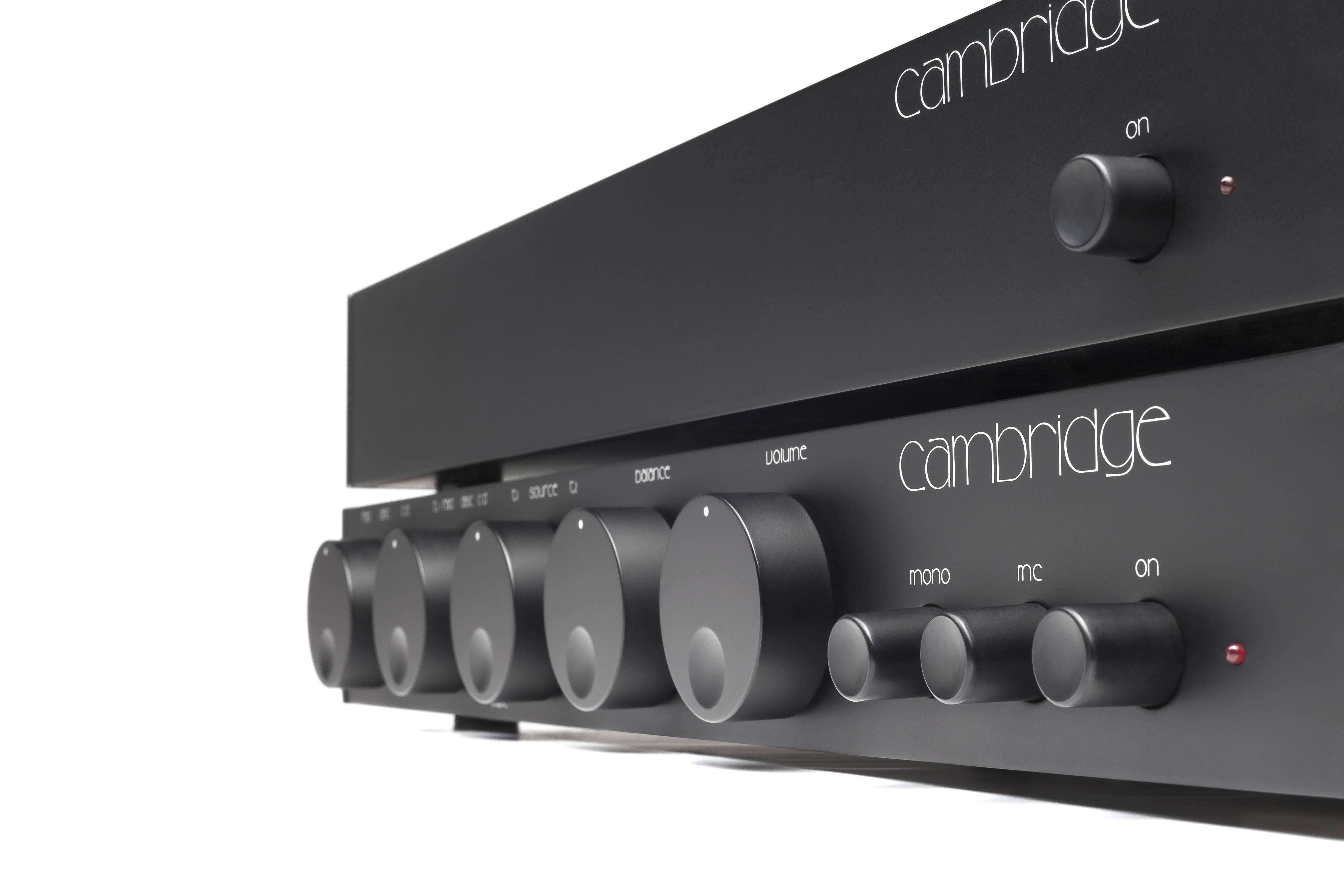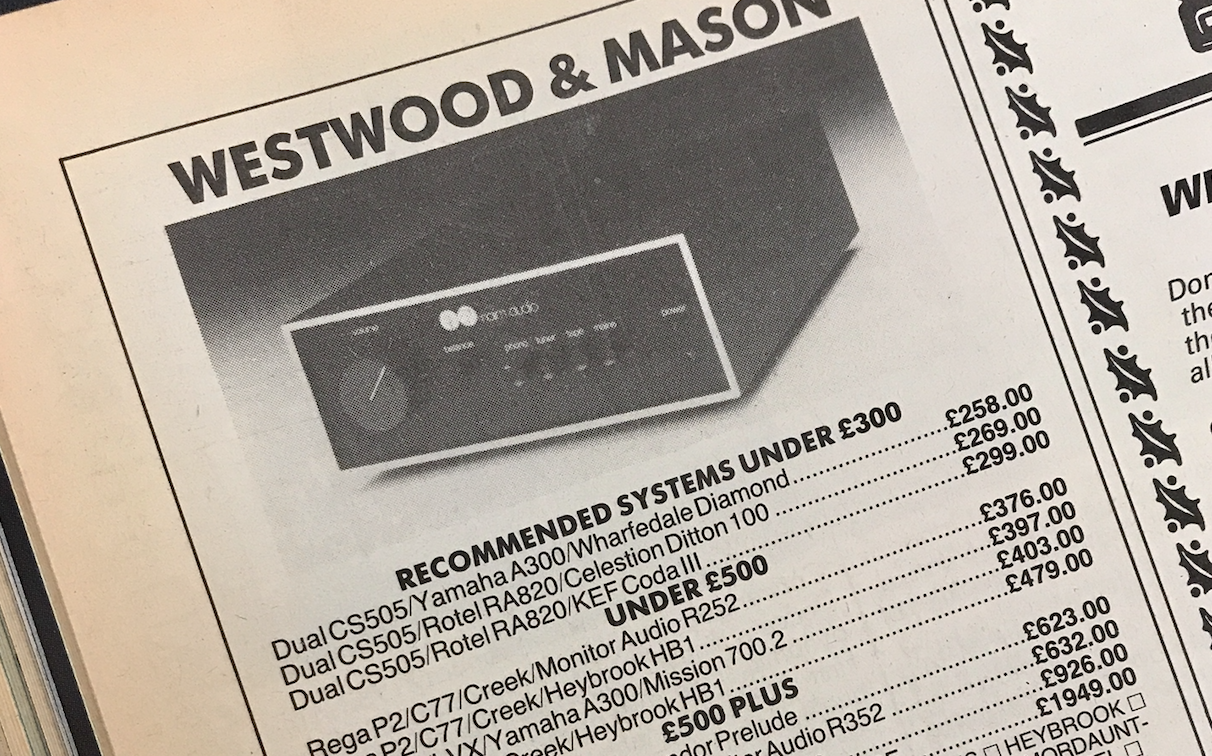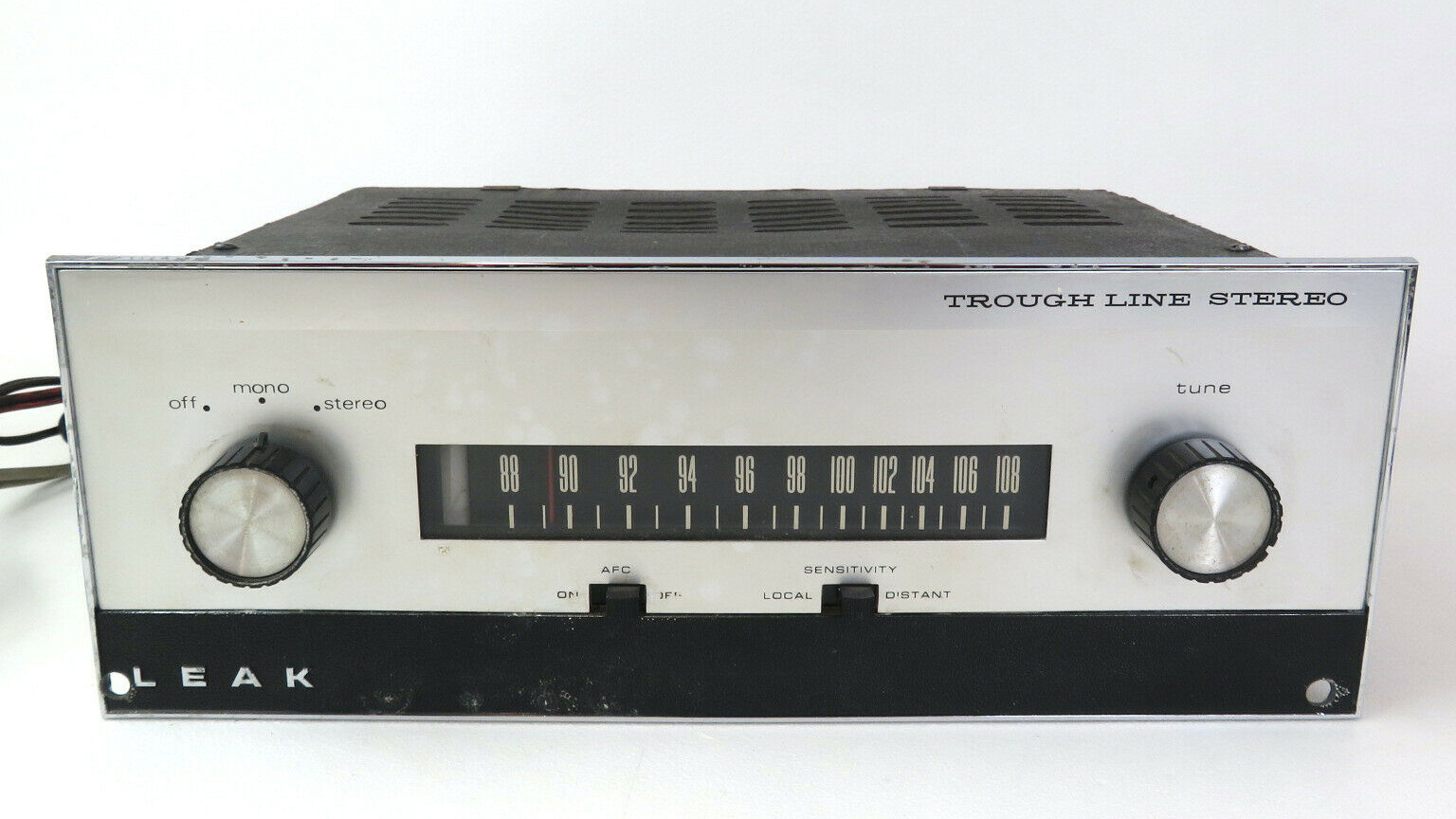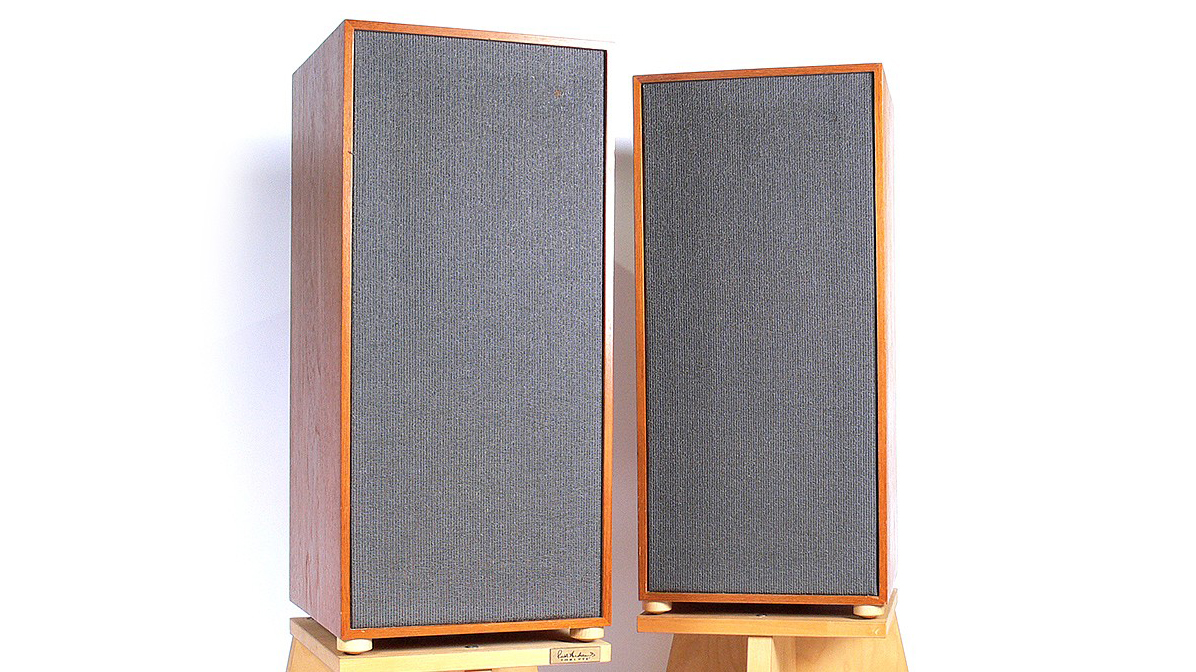
It is said that if an optimist sees a glass is half full and a pessimist sees it as half empty, then an engineer will tell you that the glass is twice as large as it needs to be.
We are reminded of this old adage when we asked some of the best engineers of the British hi-fi industry whether or not there is a distinctly British sound.
“Accurate, faithful and true,” says Nick Clarke, director of engineering at Arcam, when we ask him about a British sound. “I don’t associate it with a sound as such, the equipment should get out of the way of the music. If it doesn’t, it hasn't been designed correctly,” he adds.
“Understated, genuine and faithful reproduction throughout the entire bandwidth,” says Craig Milnes, co-owner and design director of Wilson Benesch. “Precise, natural, accurately reproducing the original recording,” says Matt Bartlett, Chord Electronics' managing director.
So, just as the job of the glass is to carry the water from the table to your lips – not to change the flavour or colour the liquid in any way – your hi-fi system should be true to its name and deliver the recording as faithfully as possible.
But as noble as that aim is, does the glass of water analogy actually stand up? Compared to record players, amplifiers and loudspeakers, the glass is a simple device. There are no problems of leakage, mechanical loss, the infidelity of digital to analogue conversion, splitting of water into different frequencies or issues of unwanted resonance. The water ripples, maybe a little of it evaporates, but it still tastes the same as it did when it left the tap.

When building a piece of hi-fi equipment, there are limitations and choices of compromise to make. Creating kit that delivers the original recorded sound, truly untainted, is next to impossible.
The latest hi-fi, home cinema and tech news, reviews, buying advice and deals, direct to your inbox.
“Sound is what turns out after the brief,” says Roy Gandy, co-founder and owner of Rega. “You choose the best materials for each required element that's affordable for each price point, then you use that material to achieve the best performance."
“We take a disc which, when rotated, creates vibrations which are read by the cantilever and stylus. The job is to be faithful with as little augmentation as possible.
"While we don't, and think it's detrimental to performance, some manufacturers might use a suspended sub-chassis to eliminate motor noise, but that adds in the natural frequency of the suspension itself and the harmonics of that; it's often a pleasant warmth. There are also materials in platters that add sound. People have got used to plastic platters and these can make a subtle church-like reverb.”
Maybe we’ve all become accustomed to some degree of additive in our audio listening, but that still doesn't mean that there is no such thing as a British hi-fi sound. Just because none of these British audio engineers is doing anything on purpose, that doesn’t mean that, from the outside, a distinctive sound doesn’t exist. The view from abroad would seem to suggest it does.
Take Marantz – not a British hi-fi company, of course, but one that has engineered specific UK editions of some of its best-loved models. The Award-winning PM6006 and CD6006 amplifier and CD player are the obvious examples. If there really is no identifiable British sound, why did Marantz bother?

“We did it partly because of the love for stereo in the UK,” says Roger Batchelor, product specialist at Sound United. “Compared with the rest of Europe or the USA, the percentage of multi-channel amplifiers sold in the UK is lower. Also, there’s a demand here for budget products with high performance and simple, straight-forward design, where sound quality is the first and foremost priority.”
And what is that sound quality exactly? According to Bachelor and his colleagues at Denon and Marantz, it’s a warm, natural overall balance; an accurate, clean bass; and wide stereo imaging with a good sense of depth and height. It's musically fun to listen to with emotional involvement, rather than pure detailed resolution. A sound with a good sense of rhythm and dynamics that draws the listener in.
On the surface, it seems obvious – timing, dynamics, tonal balance, who wouldn’t want these things? However, some markets have traditionally demanded something slightly different, particularly when it comes to low frequency. Peter Comeau, director of acoustic design for IAG (which counts Wharfedale, Quad and Mission among its brands) says it wasn’t until he left the UK that he first conceived of how this kind of sound could be deemed to be typically British.
“I started hearing about hi-fi products coming out of the USA in the late 1960s with designs from Acoustic Research, Marantz and JBL appearing out of the Atlantic fog. US speakers had a different tonal balance to British designed speakers, with a fatter bass and a more prominent presence which exaggerated the upper harmonic range of vocals, string and wind instruments.
“At the time, I decided that this was to favour US pop music, a lot of which had a marginally larger-than-life, brighter, projection. However, as soon as a record of classical music hit the turntable, the departures from neutrality quickly let the side down.”
According to Comeau, there was a sound difference even among the US designs, with an east coast/west coast divide – in the east were brands such as Acoustic Research and in the west, JBL. Both competed with the more neutral and, Comeau ventures, 'accurate' British sound, although there were plenty of US commentators who found the UK style rather warm and flat, not unlike a pint of bitter.

Undoubtedly, the influence of British pop music in the 1960s and '70s did much to influence the flavour of hi-fi of that time and the notion of a British sound. “If you played Beatles records, the squawky upper-mids were too much to bear when using JBLs,” says Comeau.
In all likelihood, the roots of a British sound go back even further than the '60s and to an era at the BBC a decade earlier. The BBC created its own research and development facility for television and radio technology, from which arose advancements such as Nicam stereo, digital audio and monitor loudspeakers.
“The BBC was the first to research loudspeakers in a holistic way, including drive units, cabinet resonance-suppression and crossover phase linearity,” says Lee Taylor, an ex-BBC sound engineer and founder of Leema Acoustics. “The resulting devices, such as the BBC LS3/5a loudspeaker, are still unsurpassed in many ways. I publicly apologise for blowing up quite so many in my time at the BBC.”
When pressed to name a product that best typifies a possible British sound, several of our interviewees listed the LS3/5a. These small studio monitors were developed for outside broadcast vans to ensure a good quality of broadcast sound. “A polite, smooth, pleasant, non-controversial sound; a loudspeaker with flat frequency response,” is how Rega’s Roy Gandy describes their audio.
Through licensing to produce these speakers under brands such as Rogers and Spendor, that balanced, neutral sound became the standard. British loudspeaker companies spun out of this research with the LS3/5a something of a common ancestor. But while these speakers were hugely influential in their own right, it was ultimately the expression of those who built them – their spirit and their methods – that was the DNA of the inherited British sound.
“For me, British hi-fi is adventurous. Those pioneers led the world in the development of high-fidelity sound,” says Peter Thomas, founder and chairman of PMC. “One of the main things that differentiated them was a willingness to use objective and subjective testing. They trusted their ears when it came to designing equipment as well as measurements. And we still produce some of the best cutting-edge designs in the world – we’re not frightened to try new ideas.”

Those pioneers include names such as Gilbert Briggs and Peter Walker, who started Wharfedale and Quad respectively in the '30s, and who passed down the baton to the likes of Stan Kelly and Arthur Radford, inventors of the Kelly ribbon tweeter and of low-distortion amplifiers. It was their passion for innovation and quality that showed the way for the next generation.
“Products built using hand-selected components, crafted with care, pride and respect” is their legacy, according to Jason Gould, brand ambassador for Naim. The long-term effect was to create a British hi-fi industry with brands such as B&W, Linn, Mission, KEF, Arcam, Rega, Naim and others all trying to out-perform each other in terms of innovative engineering.
The British entrepreneurial spirit also contributed too, inspiring the likes of 17-year-old Rob Lawley, who would later become managing director of Sevenoaks Sound and Vision, as first started by Paul Lee-Kemp in 1972. “The result was that the consumer was spoiled for choice and great sounding kit, and much of this was driven by individuals with a real vision for better sound, rather than just commercial gain,” Lawley says.
Times change, of course, and whether British-owned or otherwise, these audio companies still exist 50 years on. With different commercial pressures and influences, the methods and ideals of British hi-fi’s heyday have been diluted for some as, indeed, has that familiar sound they promoted.
But if a British sound isn't the driving force behind the people who make hi-fi in the UK, perhaps it doesn't matter. While British audio brands may not be trying to sell a British sound, there are certainly people who are looking to buy it. The label of British hi-fi still carries some meaning for AV enthusiasts across the world.
“Our products are given an immediate elevation in status when you introduce them, even in the great audio producing countries such as the USA or Japan,” says Alex Munro, Q Acoustics' brand director.
And at the end of the day, it’s really all about what the customer wants. “The feedback generated by our customers should not be underestimated,” says Ben Lily, technical sales manager at ATC. “This is a large part of what British hi-fi means to us and a huge reason why there are a large number of hi-fi companies per capita in the UK. We are lucky to have so many enthusiasts on our doorstep.”
MORE:
Cyrus interview! Cyrus XR Series: a clean break from Classic with a decade of evolution in front of it
Our pick of the best British hi-fi innovations and technologies
Exclusive: Wilson Benesch's Torus Series to enter its next generation in the summer
Dan is a staff writer at What Hi-Fi? and his job is with product reviews as well as news, feature and advice articles too. He works across both the hi-fi and AV parts of the site and magazine and has a particular interest in home cinema. Dan joined What Hi-Fi? in 2019 and has worked in tech journalism for over a decade, writing for Tech Digest, Pocket-lint, MSN Tech and Wareable as well as freelancing for T3, Metro and the Independent. Dan has a keen interest in playing and watching football. He has also written about it for the Observer and FourFourTwo and ghost authored John Toshack's autobiography, Toshack's Way.

